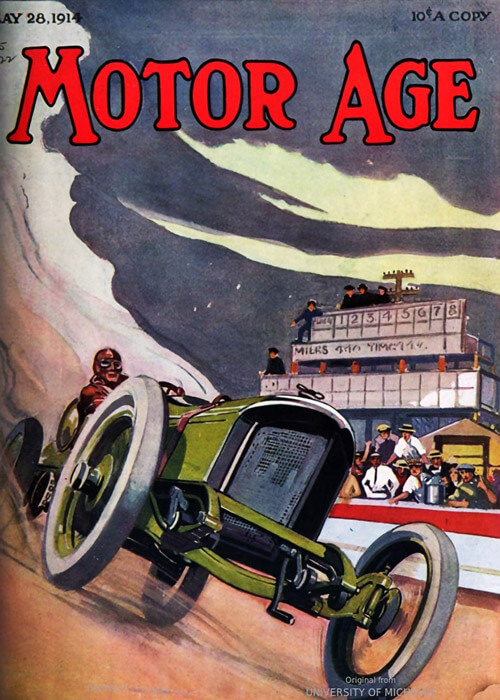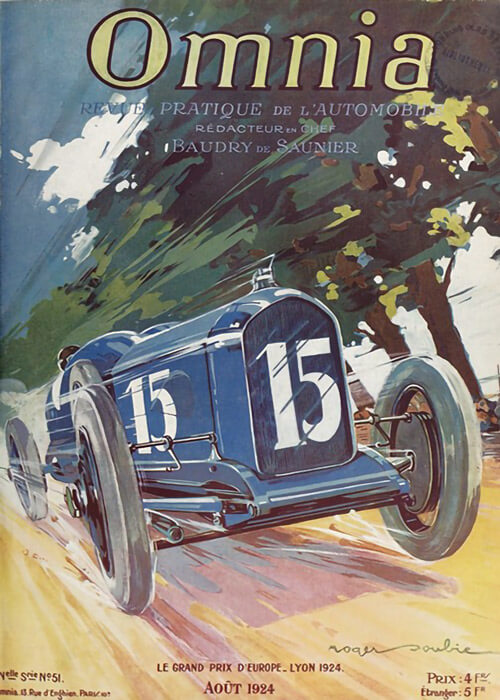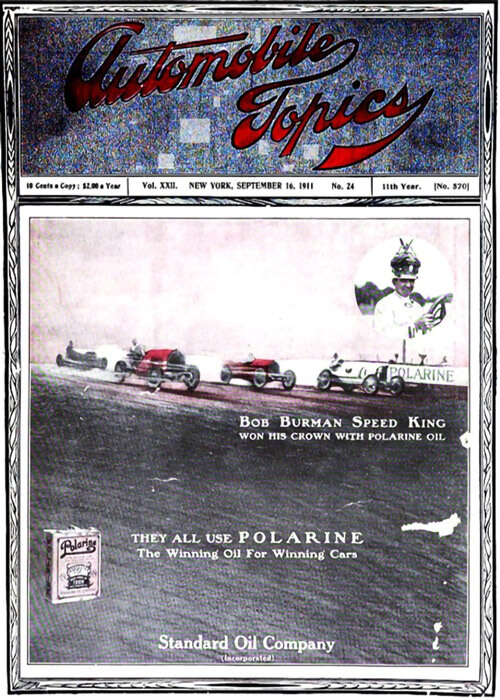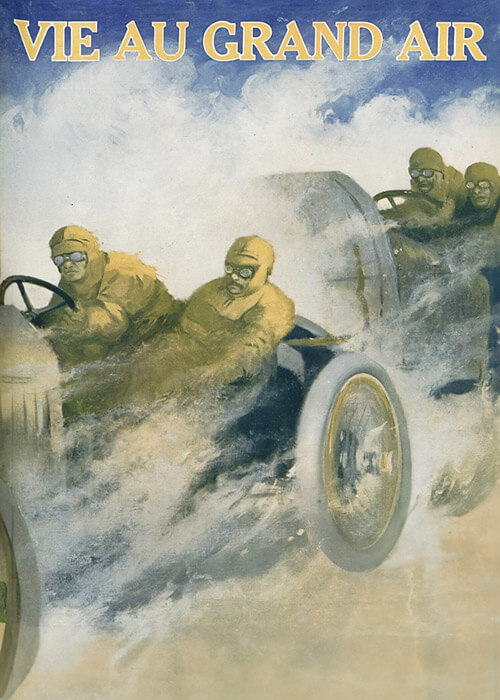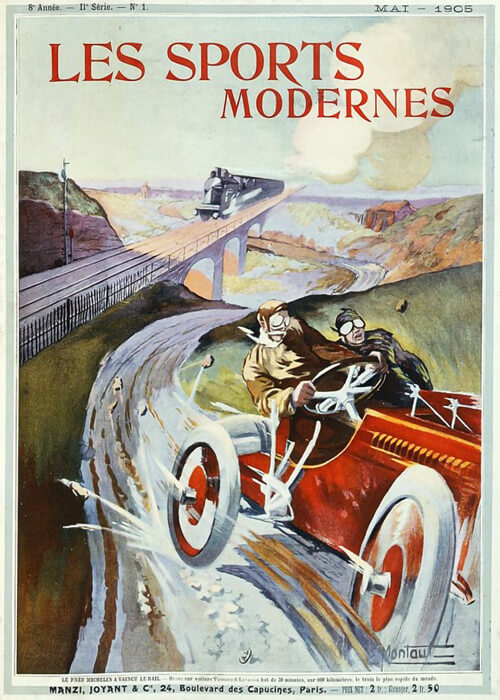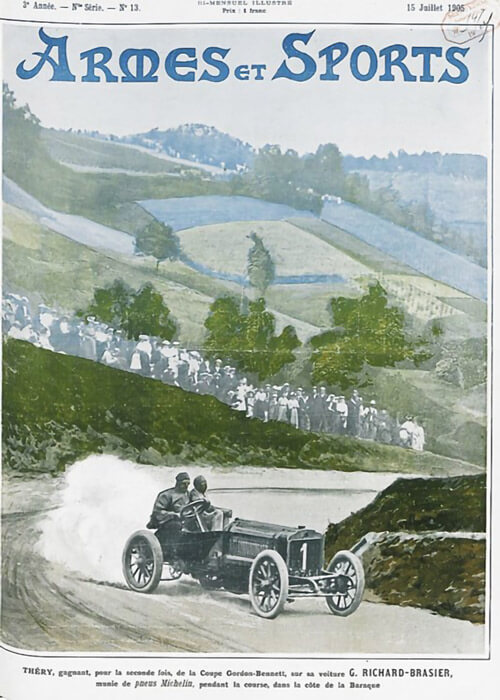The 1925 Italian Grand Prix was held on the Monza track, that was built only a few years earlier, in 1922. The first two finishers were, again Alfa Romeo, thereby clinching the World championship for manufacturers.
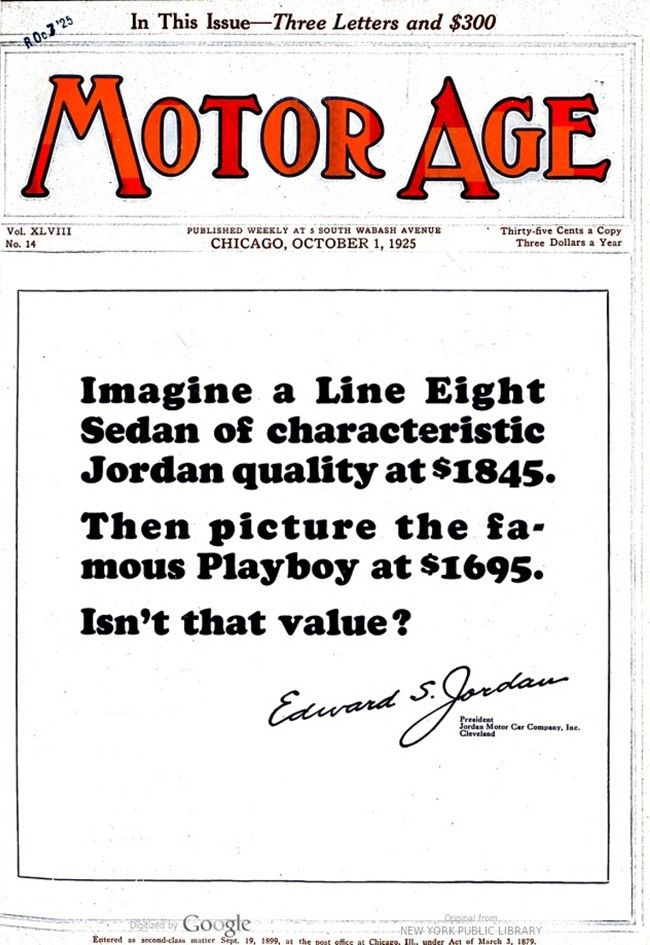
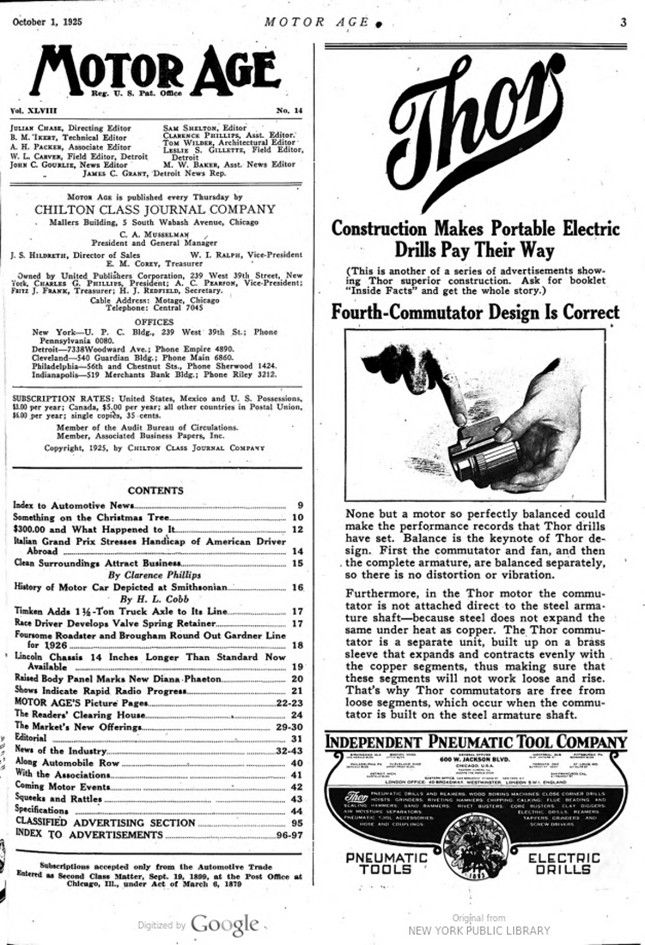
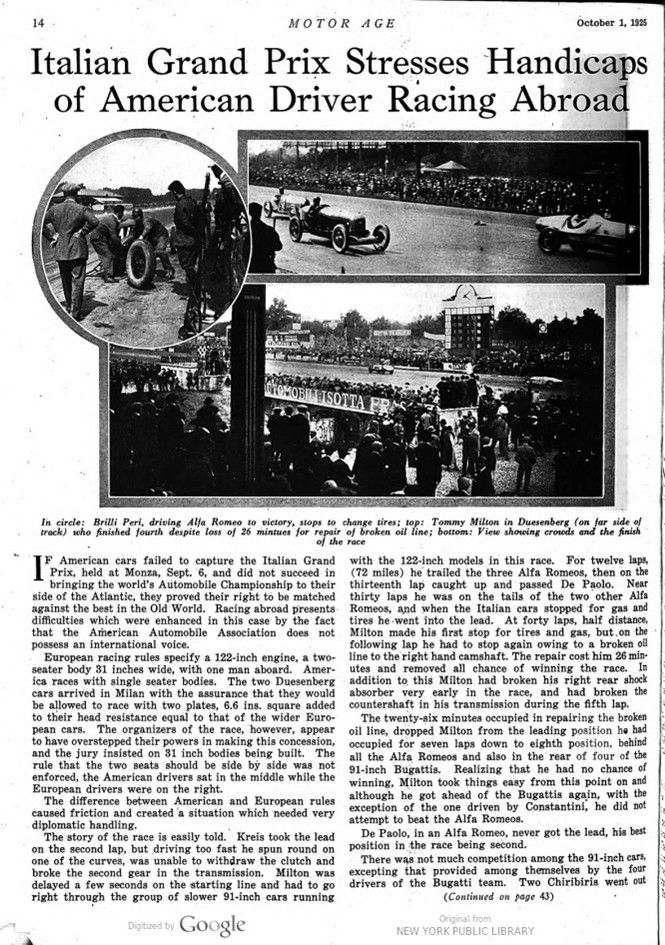
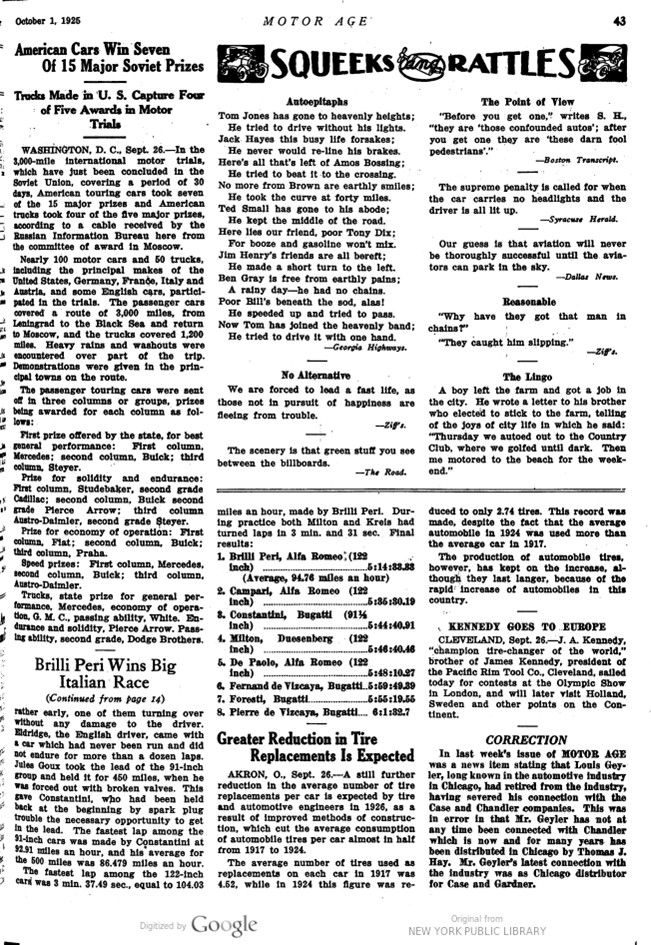

Text and jpegs by courtesy of hathitrust.org www.hathitrust.org, compiled by motorracinghistory.com
MOTOR AGE Vol. XLVIII, No. 24, October 1, 1925
Italian Grand Prix Stresses Handicaps of American Driver Racing Abroad
IF American cars failed to capture the Italian Grand Prix, held at Monza, Sept. 6, and did not succeed in bringing the world’s Automobile Championship to their side of the Atlantic, they proved their right to be matched against the best in the Old World. Racing abroad presents difficulties which were enhanced in this case by the fact that the American Automobile Association does not possess an international voice.
European racing rules specify a 122-inch engine, a two- seater body 31 inches wide, with one man aboard. America races with single seater bodies. The two Duesenberg cars arrived in Milan with the assurance that they would be allowed to race with two plates, 6.6 ins. square added to their head resistance equal to that of the wider European cars. The organizers of the race, however, appear to have overstepped their powers in making this concession, and the jury insisted on 31 inch bodies being built. The rule that the two seats should be side by side was not enforced, the American drivers sat in the middle while the European drivers were on the right.
The difference between American and European rules caused friction and created a situation which needed very diplomatic handling.
The story of the race is easily told. Kreis took the lead on the second lap, but driving too fast he spun round on one of the curves, was unable to withdraw the clutch and broke the second gear in the transmission. Milton was delayed a few seconds on the starting line and had to go right through the group of slower 91-inch cars running with the 122-inch models in this race. For twelve laps, (72 miles) he trailed the three Alfa Romeos, then on the thirteenth lap caught up and passed De Paolo. Near thirty laps he was on the tails of the two other Alfa Romeos, and when the Italian cars stopped for gas and tires he went into the lead. At forty laps, half distance, Milton made his first stop for tires and gas, but on the following lap he had to stop again owing to a broken oil line to the right hand camshaft. The repair cost him 26 minutes and removed all chance of winning the race. In addition to this Milton had broken his right rear shock absorber very early in the race, and had broken the countershaft in his transmission during the fifth lap.
The twenty-six minutes occupied in repairing the broken oil line, dropped Milton from the leading position he had occupied for seven laps down to eighth position, behind all the Alfa Romeos and also in the rear of four of the 91-inch Bugattis. Realizing that he had no chance of winning, Milton took things easy from this point on and although he got ahead of the Bugattis again, with the exception of the one driven by Constantini, he did not attempt to beat the Alfa Romeos.
De Paolo, in an Alfa Romeo, never got the lead, his best position in the race being second.
There was not much competition among the 91-inch cars, excepting that provided among themselves by the four drivers of the Bugatti team. Two Chiribiris went out rather early, one of them turning over without any damage to the driver.
Eldridge, the English driver, came with Greater Reduction in Tire a car which had never been run and did not endure for more than a dozen laps. Jules Goux took the lead of the 91-inch group and held it for 450 miles, when he was forced out with broken valves. This gave Constantini, who had been held back at the beginning by spark plug trouble the necessary opportunity to get in the lead.
The fastest lap among the 91-inch cars was made by Constantini at 92.91 miles an hour, and his average for the 500 miles was 86.479 miles an hour. The fastest lap among the 122-inch cars was 3 min. 37.49 sec., equal to 104.03 miles an hour, made by Brilli Peri. During practice both Milton and Kreis had turned laps in 3 min. and 31 sec. results:
1. Brilli Peri, Alfa Romeo (122 inch) Final 5:14:33.33 (Average, 94.76 miles an hour)
2. Campari, Alfa Romeo (122 inch) 5:35:30.19
3. Constantini, Bugatti (91½ inch) 5:44:40.91
4. Milton, Duesenberg (122 inch) 5:46:40.46
5. De Paolo, Alfa Romeo (122 inch) 5:48:10.27
6. Fernand de Vizcaya, Bugatti. 5:59:49.39
7. Foresti, Bugatti….. 5:55:19.55
8. Pierre de Vizcaya, Bugatti…. 6:1:32.7
Fotos.
In circle: Brilli Peri, driving Alfa Romeo to victory, stops to change tires; – top: Tommy Milton in Duesenberg (on far side of track) who finished fourth despite loss of 26 minutes for repair of broken oil line; – bottom: View showing crowds and the finish of the race
